We’ll increase conversions by
20-100+%
on your website.
Get a FREE Audit today
See how we can help your business increase conversion rates
Optimizing Your Shopify Landing Page
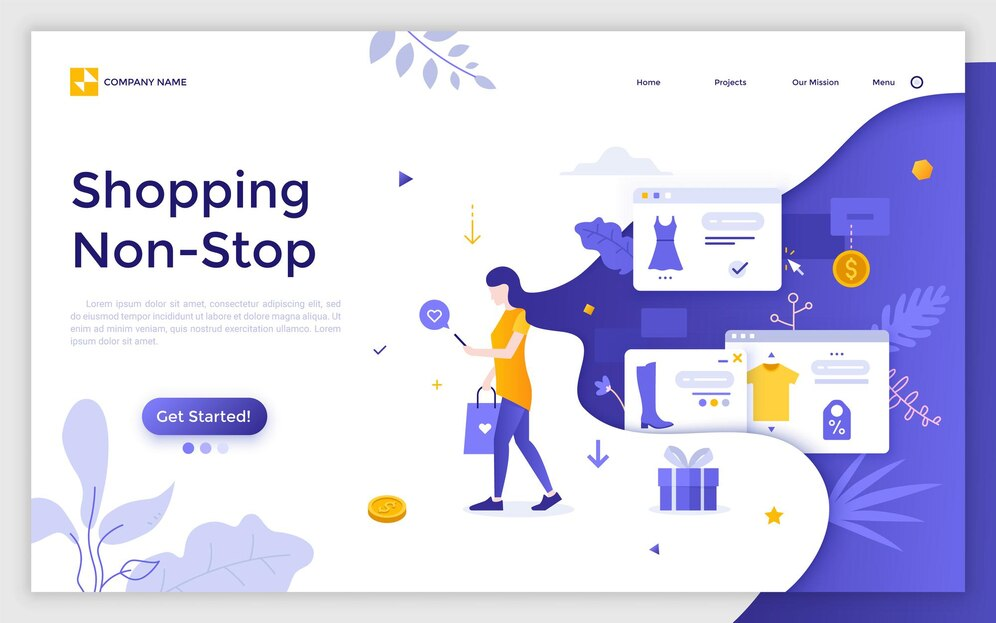
An enigmatic web page, designed specifically for the purposes of a marketing or advertising campaign, is shrouded in mystery and complexity. Case studies have shown that the design and content of landing pages can have a significant impact on conversion rates and customer acquisition.
It’s the page that a curious user “lands” on, triggered by an advertisement or a link, and oh, the complexity! The perplexity it exudes is almost palpable.
But wait, there’s more! The importance of a landing page cannot be overstated, for it possesses a remarkable ability to convert visitors into leads or customers, transcending the limits of the mundane website homepage.
A landing page is a sharp and cunning tool, with a clear call-to-action (CTA) that snatches the user’s attention and guides them toward a specific goal.
With its laser-like focus, it removes all distractions and bombards the user with a clear value proposition, elevating conversion rates to the highest levels and allowing businesses to achieve success beyond their wildest dreams.
Yet, the significance of the landing page doesn’t end there! It provides a gateway to the secret knowledge of marketing campaigns, allowing businesses to track user behavior and measure the success of specific promotions or offers.
The deployment of different landing page designs, optimized for conversions, unleashes a tempest of marketing efforts, continuously improving their endeavors and amplifying their return on investment (ROI). It’s akin to watching a magnificent fireworks display of data and insights, illuminating the path to glory with its multifaceted burstiness.
In conclusion, the landing page is a complex and multifaceted entity, exuding perplexity and bursting with variation. Its importance lies in its ability to convert visitors into customers, its focused and cunning nature, and its capacity to provide insights and track user behavior. A true marvel of marketing ingenuity!
Hark! What doth my eyes behold? ‘Tis the elusive landing page on Shopify shrouded in mystery and designed to captivate and perplex the visitor. But what, pray to tell, is its true purpose? Sit tight and brace yourself for a spellbinding explanation!
The principal aim of a landing page on Shopify is to confound and bamboozle the visitor enough to convert them into a customer or lead. This stand-alone web page is part of a specific marketing or advertising campaign, painstakingly crafted to present a magnetic and bewildering message that promotes a particular product, service, or offer.
The goal is to seize the visitor’s attention, lure them into a web of confusion, and provide them with a clear call-to-action that leads them towards the endgame of making a purchase or submitting their contact information.
Diametrically opposed to a website’s homepage, which often has a more generalized message and multiple objectives, a landing page on Shopify is specifically designed to fulfill one singular, perplexing objective – to confound the visitor enough to guide them towards the desired action.
Stripped of any extraneous or diverting elements, the landing page exudes an air of mystery and enchantment, with a clear value proposition to keep the visitor spellbound and engaged. A triumphantly confounding landing page can elevate conversion rates to new heights, propelling a business towards unparalleled success, and enabling Shopify merchants to achieve their goals and objectives.
In essence, the purpose of a landing page on Shopify is to create a bedazzling and high-converting destination for visitors to land on, where they can lose themselves in the product or service, emerging at the other end, bewildered and enchanted, but ultimately compelled to take the desired action. This, in turn, drives business growth and success, leaving a trail of mystified visitors in its wake.
So there you have it, my dear friend – the mysterious and multifaceted purpose of a landing page on Shopify, rendered in all its perplexing and bursty glory!
1.) Design
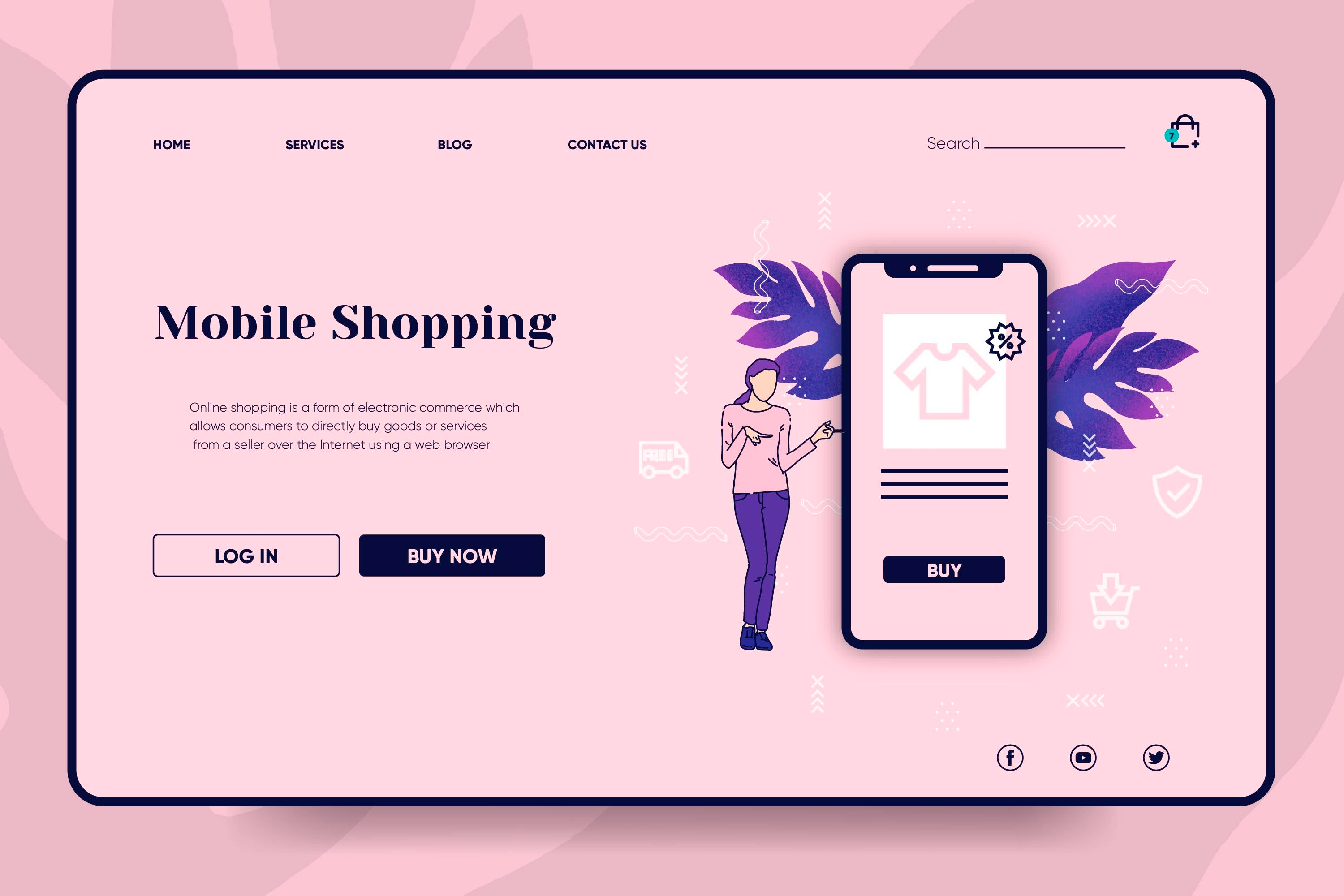
Why a visually appealing design matters
Ahoy there, my dear comrade! Have you caught wind of the utmost importance of a visually striking design? It can make all the difference, I assure you!
Regarding design, it’s not just about function; aesthetics are equally essential. A visually appealing design can seize the audience’s attention, make a potent first impression, and convey professionalism and credibility.
Did you know that studies suggest that users evaluate a website within a mere fraction of a second based on its visual appeal?
Not only that, a visually pleasing landing page design can improve the user experience, facilitating visitors to navigate and interact with the content. A finely crafted website or landing page can result in amplified engagement, longer session times, and ultimately, higher conversion rates.
Furthermore, an attractive design can differentiate a brand from its competitors and reinforce its identity. A distinctive and unforgettable visual design can leave an indelible impression in the minds of the audience, fostering brand recognition and loyalty.
Nevertheless, neglecting the design of your website or landing page can have disastrous consequences. A poorly designed website can have a negative impact on the user experience, repel visitors, and cast a brand in an unprofessional and untrustworthy light. Ultimately, it leads to a loss of potential customers.
In summary, a visually appealing design is a requisite for any website or landing page. It can captivate the audience, enhance the user experience, differentiate a brand, and ultimately drive higher conversion rates and business growth. Do not economize on design, my comrade – it’s worth every red cent!
Key design elements to include, such as a clear call-to-action (CTA), images, and brand messaging
Ah, the key design elements of a successful landing page! Let me tell you, there’s a lot that goes into it.
First and foremost, you need a clear call-to-action (CTA) that tells your visitors exactly what you want them to do. Whether it’s to buy a product, sign up for a newsletter, or download a resource, the CTA should be prominently displayed and stand out from the rest of the page. Make it eye-catching, use action-oriented language, and be sure to place it above the fold so it’s one of the first things visitors see.
But that’s not all – you also need to use images that capture your visitors’ attention and help to tell your brand’s story. Use high-quality, relevant images that showcase your product or service in action and evoke the emotions you want your visitors to feel.
Be careful not to overload your page with too many images, as this can be overwhelming and distract from your message.
And let’s not forget about brand messaging! Your landing page should be consistent with your brand’s voice and style, using the same colors, fonts, and tone of voice that you use across all of your marketing channels.
Make sure your messaging is clear and concise, and highlights the unique value proposition that your product or service offers.
Other key design elements to consider include the layout and organization of your page, the use of whitespace to create a clean and uncluttered design, and the use of social proof such as customer testimonials or trust badges to establish credibility and build trust with your visitors.
In conclusion, a successful landing page requires careful consideration of key design elements such as a clear CTA, attention-grabbing images, and consistent brand messaging. By focusing on these elements, you can create a landing page that effectively communicates your message, engages your visitors, and drives conversions.
Best practices for design on Shopify landing pages
Hey there, let me share some cutting-edge best practices for designing Shopify landing pages that are guaranteed to make your page pop!
First and foremost, keeping it simple is crucial. A landing page should be straightforward, with a clear value proposition and call-to-action. It’s essential to avoid overwhelming your audience with a jumbled mess of clutter and extraneous elements that may distract from the main message.
Next up, high-quality visuals are an absolute must. Images are an incredibly powerful tool for grabbing your audience’s attention and conveying the message of your landing page. Be sure to use top-notch visuals that are relevant to the product or service being promoted.
Selecting the right typography is also paramount. It should be legible and straightforward to read, while still reflecting your brand’s identity. Avoid going overboard with a profusion of different fonts, and keep the text size consistent.
Remember, mobile reigns supreme! The bulk of internet traffic now comes from mobile devices, so optimizing your landing page for mobile viewing is a must. Ensure that your page is responsive and that the content is easy to read on smaller screens.
Color is another vital aspect of your design. You can use it to generate a mood or feeling and draw attention to specific elements of your landing page. Opt for colors that align with your brand identity and strategically employ them to emphasize critical information.
Your call to action is also critical. It’s what steers the user toward the desired action, so make sure it stands out and is easily located, with concise and straightforward phrasing.
Finally, don’t forget to test and optimize. Testing and refining the design of your landing page is pivotal to enhancing its effectiveness. Experiment with different designs and layouts and employ A/B testing to determine which design performs better in terms of conversion rates.
By implementing these best practices, Shopify merchants can construct landing pages that are stunning, user-friendly, and effective at driving conversions.
2.) Content
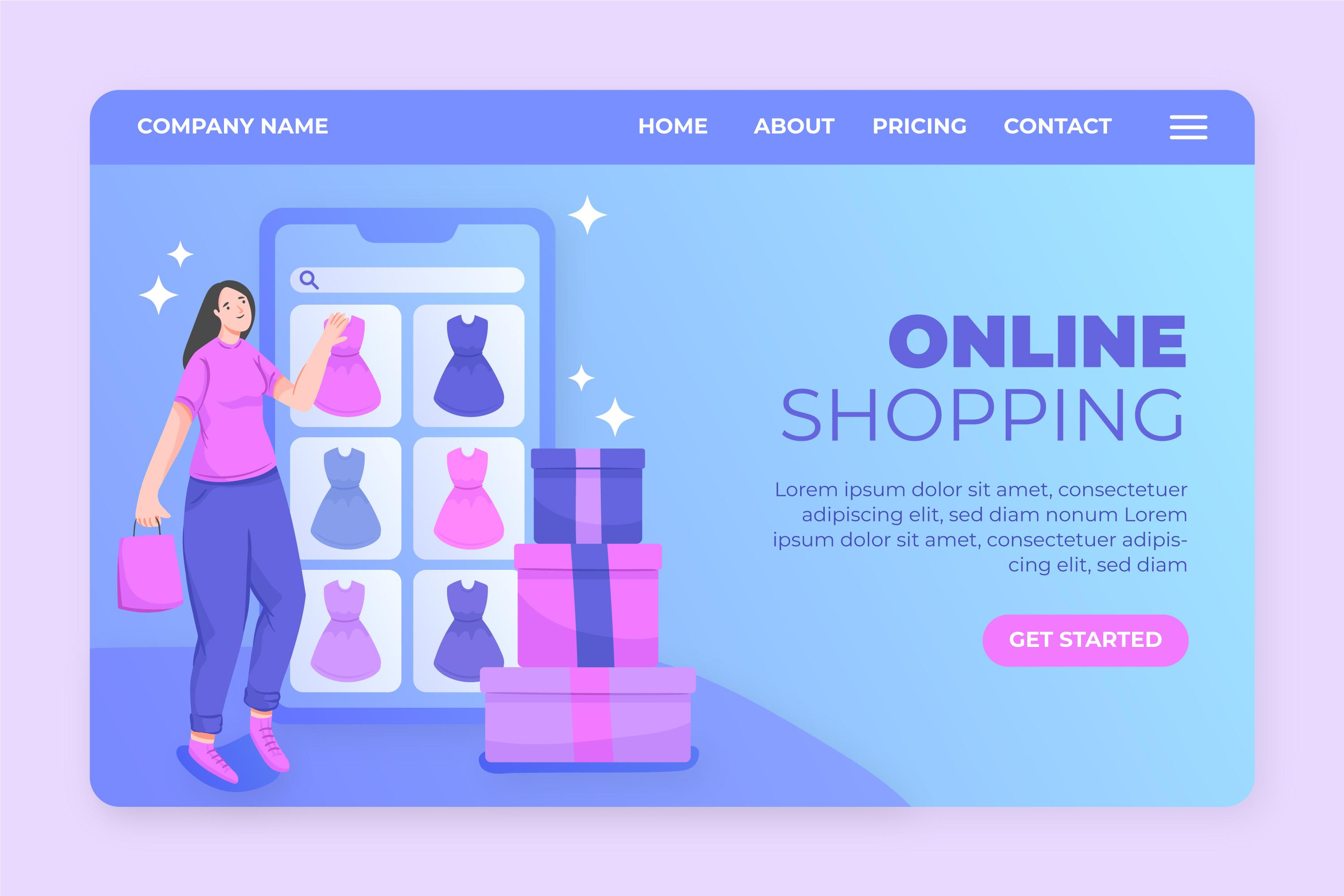
Clear and concise content
Allow me to talk to you about the utmost significance of understandable and brief content! It’s absolutely necessary for effective communication, whether it’s on a website, landing page, or any other medium.
You wouldn’t want to disappoint your audience with perplexing or confusing content that could result in disengagement.
Easy-to-understand and brief content are uncomplicated, avoiding complicated language or jargon. It’s focused on the main message and avoids irrelevant information or side topics. By being brief, it respects the reader’s time and guarantees that the information is presented in an easily absorbable way.
Landing pages require a particularly understandable and brief message, given the limited attention span of visitors and the specific goal of the page. The content must be tailored to the target audience, highlighting the benefits of the product or service and providing a clear call-to-action that inspires them to take the desired action.
In addition to enhancing the user experience, understandable and brief content can also improve search engine optimization (SEO). Search engines favor relevant and well-organized content, with clear and concise headings and subheadings. By optimizing content for both users and search engines, it can lead to increased visibility, traffic, and ultimately, conversions.
So, there you have it! Understandable and brief content is crucial for effective communication, particularly on landing pages. By following best practices for content creation, Shopify sellers can create landing pages that are effective in achieving their goals and promoting business growth.
Key content elements to include, such as product descriptions, benefits of the product, and social proof

When it comes to developing content for a website or landing page, there are a plethora of crucial elements that should be included to ensure effective communication and engagement with the target audience.
Here are a few of the fundamental content elements to consider:
Product delineations: Explicitly describing your product or service is pivotal to help your audience grasp its purpose and functionality. This can incorporate characteristics, specifications, and other consequential minutiae that aid your potential customers to know precisely what they can anticipate.
Advantages of the product: Accentuating the benefits of the product is a stupendous way to communicate how it can rectify the user’s predicament or fulfill their requirements. This can encompass how the product economizes time or money, improves performance, or elevates the user’s experience in some way.
Social proof: Inclusive of social proof, such as customer evaluations or endorsements, can aid in building trust and credibility with the audience. This can comprise quotations from satisfied customers, case studies, or recommendations from industry experts, which can add authenticity and reliability to your brand.
Call-to-action: A clear and compelling call-to-action (CTA) is crucial to guide the user towards the desired action, such as completing a purchase or subscribing to a newsletter. The CTA should be visible and straightforward, with concise and comprehensible wording that motivates the user to take action immediately.
Visual components: Visual elements, such as pictures, videos, and infographics, can assist in breaking up the text and make the content more captivating and memorable. These elements should be high-quality and pertinent to the product or service being offered, and could even comprise interactive components to keep the user engaged.
By assimilating these critical content elements, Shopify merchants can create content that efficaciously communicates their message, captivates the audience, and drives conversions.
Best practices for content on Shopify landing page
If you’re looking to create Shopify landing pages that truly stand out and boost conversions, there are several best practices to keep in mind.
Below, we’ll explore some key strategies that can help you develop compelling, persuasive, and effective content that connects with your intended audience.
Firstly, it’s crucial to keep your content concise. Landing pages necessitate content that’s clear and straight to the point, with a primary focus on the most crucial messages and advantages of your product or service. Avoid confusing or sidetracking your readers with superfluous information.
To captivate your audience’s attention and resonate with their motivations and pain points, it’s also essential to highlight the benefits of what you’re offering clearly and prominently. Ensure that you use persuasive language that’s action-oriented and emotionally impactful, instead of relying on overly technical or jargon-heavy terminology that might deter your readers.
Social proof is another essential element of effective landing page content. Incorporating customer reviews, testimonials, and endorsements can establish trust and credibility with your audience.
Be sure to present social proof that’s relevant, compelling, and speaks directly to your target users’ needs and interests.
Visual elements can also play a vital role in catching your audience’s attention and supporting your key messages. High-quality images and videos can break up the text and make your content more memorable and engaging. Don’t forget to optimize your content for search engines by using relevant keywords and structuring your content in an easy-to-read format.
By implementing these best practices into your Shopify landing page content, you can create pages that genuinely resonate with your intended audience and drive conversions like never before.
3.) Optimization
Optimization for increased conversions
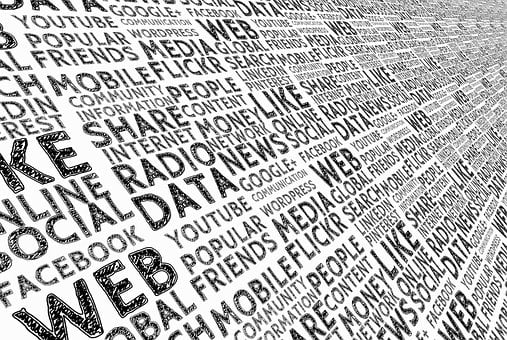
Optimization for conversions is an indispensable process for businesses as it elevates the efficiency of their website or landing page in accomplishing the coveted goals.
This entails carrying out modifications in the content, layout, design, and functionality of the website or landing page to inspire visitors to perform specific actions such as making a purchase, signing up for a service, or filling out a form.
Achieving top-notch conversion rates requires analyzing user behavior and pinpointing areas that require refinement.
This might involve optimizing the phrasing and placement of calls-to-action, refining the website’s loading speed, or streamlining the checkout process.
To enhance the website’s efficacy in achieving its objectives, these improvements can be made using data-driven methodologies such as A/B testing, which measures the impact of changes and adjusts them accordingly.
Effectively optimizing for conversions boosts visitor engagement, ultimately translating into increased sales, leads, and other favorable outcomes, thereby heightening the return on investment (ROI) of marketing efforts and driving business growth. In a nutshell, optimization for conversions is a crucial process for businesses to improve their website or landing page’s effectiveness in achieving their desired goals. Continuous refinement and enhancement of the business’s online presence using data-driven techniques are imperative to remain competitive in today’s digital landscape.
Key optimization elements to include, such as a clear CTA, fast load times, and mobile responsiveness

Optimizing a site or landing page for conversions can be a bewildering task, with multiple crucial aspects to contemplate in order to achieve the desired outcome.
These optimization components are bursting with significance and consist of:
Distinct call-to-action: Having a clear and prominent call-to-action (CTA) is absolutely essential in successfully directing visitors towards taking the desired action, such as completing a form or making a purchase.
The CTA should be meticulously designed, utilizing visually pleasing components and action-oriented language to clearly convey the desired outcome.
Rapid load times: In today’s fast-paced world, visitors possess zero tolerance for slow-loading sites. This can result in increased bounce rates, which can seriously impair the effectiveness of a site or landing page.
Optimizing for rapid load times involves a range of techniques, such as compressing images and videos, minifying code, and utilizing content delivery networks (CDNs) to hasten delivery.
Mobile adaptability: With the rising number of mobile internet users, it’s imperative that sites and landing pages are optimized for mobile. This necessitates utilizing an adaptive design that adjusts to various screen sizes, optimizing for touch-based navigation, and ensuring that content is easy to read and interact with on small screens.
Pertinent and compelling content: The caliber of content plays a vital role in keeping visitors engaged and encouraging them to take action. Content should be well-organized, scannable, and centered on the key benefits of the product or service being offered.
Clear and concise messaging: Employing clear and concise messaging is crucial in effectively conveying the key benefits of the product or service. Avoiding technical jargon or extraneous language can help maintain visitors’ attention on the message.
Trust and credibility components: Incorporating trust and credibility components, such as customer reviews, awards, and endorsements, can help to establish visitors’ trust and motivate them to take action. It’s crucial that these components be prominently displayed and germane to the product or service being offered.
By assimilating these key optimization components, businesses can improve the effectiveness of their site or landing page in achieving its desired goals. This can lead to increased sales, leads, and other desired outcomes, ultimately propelling business growth and success.
Best practices for optimization on Shopify landing pages
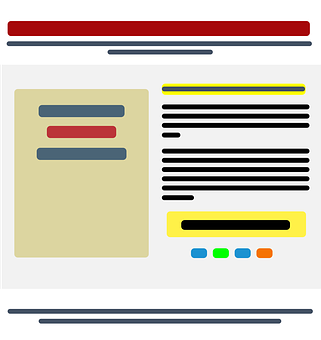
The optimization of Shopify landing pages can be an overwhelming task, with a wide range of best practices to consider. One of the foremost elements is the call-to-action, which must be glaringly clear and prominent, guiding users to take the desired action in a seamless manner.
To optimize user experience and enhance search engine optimization, fast load times are crucial. Accomplishing this entails compressing images and videos, minifying code, and leveraging content delivery networks (CDNs) to hasten page load times.
Given the rapidly growing number of users accessing websites via mobile devices, mobile responsiveness is also imperative. Employing a responsive design that adjusts to various screen sizes and devices is paramount. Multiple device testing is vital to ensure the page appears and operates correctly.
Employing high-quality visuals that support the product’s key message and benefits can make the content more engaging and memorable.
These visuals must be optimized to avoid delays in page loading. Simplifying the checkout process is another fundamental element of optimization.
The checkout process should be effortless, collecting only necessary information. Employing a clear and concise form and providing a progress bar indicating the visitor’s position in the process can be beneficial.
Social proof can establish trust and credibility with visitors. Social proof can include customer reviews and ratings that are persuasive and relevant. Displaying these elements prominently on the landing page is essential.
Finally, optimizing the landing page for search engines can enhance visibility and search ranking. Employing relevant and targeted keywords in the content and meta descriptions, organizing the page meticulously, and ensuring it is easy to read are all essential for optimization.
By implementing these optimization techniques, Shopify merchants can optimize their landing pages for maximum effectiveness in achieving their desired goals.
These desired outcomes may include increased sales, leads, and other objectives that ultimately drive business growth and success.
4.) Testing and Analysis
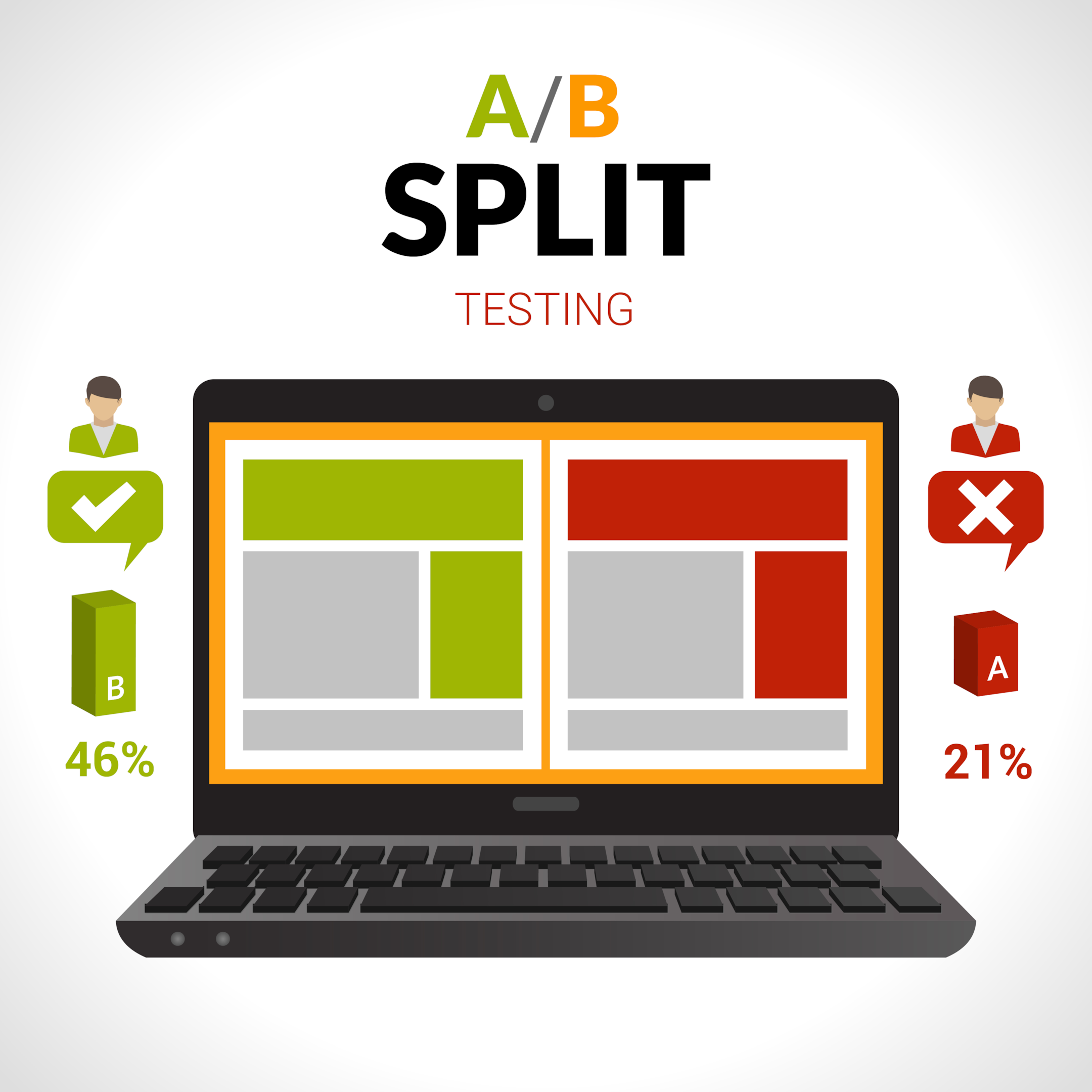
Why testing and analyzing landing pages is essential
It’s no secret that testing and analyzing landing pages is pivotal to ensure they achieve the desired objectives, such as ameliorating sales, generating leads, or enhancing website traffic.
Without carrying out such tests and analyses, it is nearly impossible to identify which elements of a landing page require optimization.
A/B testing is an effective method to test different versions of a landing page, including layout changes, headline wording, or CTA placement, and determine which version performs better.
By randomly directing website traffic to different variations of the landing page and scrutinizing the results, data-driven decisions can be made to refine and enhance the effectiveness of the landing page.
Moreover, scrutinizing user behavior on the landing page is another approach that businesses can undertake. By tracking visitors’ time on the page, the elements they interact with, and their drop-off points in the conversion process, areas of the landing page that require improvement can be identified.
The data gathered can be used to make informed decisions on how to optimize the page further.
In conclusion, testing and analyzing landing pages are essential to help businesses make informed decisions to optimize them to achieve the desired goals effectively.
Continuously testing and analyzing is fundamental to refining and improving landing pages over time, leading to increased conversions, a higher ROI, and more significant business success.
Best practices for A/B testing and analyzing landing page performance

Wait a moment! If you want to ensure that you are efficiently conducting A/B testing and scrutinizing landing page performance, you ought to prepare and comply with a range of optimal methodologies.
In the first place, you need to establish transparent and explicit goals for your landing page before initiating any A/B testing or analysis.
These objectives may differ from boosting sales to creating leads or enhancing user engagement. Having a distinct target in mind is essential since it will guide your entire testing and analysis process.
But that’s not all! Another optimal methodology is to test only one feature at a time during your A/B tests. Refrain from attempting to test both the headline and the CTA button concurrently, as it may cause problems. Testing one component at a time will help you isolate the influence of each component on the overall performance of your landing page.
Now, this is where it gets intriguing. To guarantee that your test results are dependable and statistically significant, you must perform your tests for a satisfactory duration.
This could be as brief as several days or as long as a complete week, depending on the traffic to your landing page. Once you have carried out your tests and collected the outcomes, you must analyze the data and extract valuable insights from it.
Search for patterns and trends in the data and decide which version of your landing page performed better in achieving your predefined objectives.
After identifying the version of your landing page that performed better, it’s time to execute the changes to the live landing page. However, don’t just make the changes and forget about it. It’s crucial to document the changes and track the performance of the updated landing page.
A/B testing and analysis is an ongoing process, and you should always be searching for opportunities to improve. Employ the insights obtained from previous tests to inform future testing and analysis.
If you can comply with these optimal methodologies for A/B testing and analyzing landing page performance, you can greatly improve the effectiveness of your landing pages in accomplishing your desired objectives. This translates into more conversions, higher ROI, and greater business triumph. So, what are you waiting for? Commence testing right away!
Tools and resources for testing and analysis on Shopify landing pages

Behold! Shopify, an ecommerce colossus, presents a myriad of options for testing and analyzing the performance of landing pages.
Herein lie some noteworthy ones:
Shopify’s in-built A/B testing tool: Delight in the convenience of creating and testing various versions of landing pages with Shopify’s in-built A/B testing tool, which allows one to customise layout, design, and copy.
Google Analytics: By interlacing Google Analytics with Shopify landing pages, one can track user behavior and evaluate page performance, all for free! Metrics such as bounce rate, time on page, and conversion rate can be analyzed to inform optimization and A/B testing.
Hotjar: Hark! Hotjar, a user behavior analytics tool, enables users to track visitor interaction with Shopify landing pages. Heatmaps, user recordings, and conversion funnels are some of its useful features that can help to identify landing page improvement areas.
Optimizely: Oho! Optimizely is a platform that offers experimentation and A/B testing features for Shopify landing pages. It allows users to create and test different landing page variations and provides analytics and data to aid optimization.
Lucky Orange: Fortuitous indeed! Lucky Orange is another tool that provides features for tracking user behavior on Shopify landing pages, including heatmaps, visitor recordings, and form analytics. This can help to identify areas that require optimization.
To sum it up, Shopify offers a veritable cornucopia of resources and tools for testing and analyzing landing page performance. By using these tools, businesses can continually refine and optimize their Shopify landing pages, resulting in amplified conversions, heightened ROI, and more substantial business success. So, seize the moment and test with temerity!
Conclusion

Summary
Behold! A well-designed and optimized landing page on Shopify is a crucial factor for businesses to achieve their desired outcomes. ‘Tis no exaggeration to say that it can make or break their success. With a finely-crafted landing page, businesses can ameliorate user engagement, minimize bounce rates, and improve conversion rates, thereby driving website traffic, generating leads, or increasing sales.
But, that’s not all! The journey to a top-performing landing page does not end with its creation. Nay, businesses must continuously optimize it through rigorous A/B testing and analysis to refine and enhance its performance. By doing so, businesses can achieve higher conversions, greater ROI, and, ultimately, business success.
Thankfully, Shopify provides a cornucopia of resources and tools for A/B testing and analyzing landing page performance.
With these tools at their disposal, businesses can constantly improve and fine-tune their landing pages to achieve their objectives and maximize their outcomes. So, do not wait any longer! Start optimizing your landing pages on Shopify today and witness the miraculous transformation of your business.
Call-to-action for visitors to take action on the landing page, such as making a purchase or signing up for a newsletter.
The call-to-action (CTA) on a landing page is crucial for encouraging visitors to take action, whether it’s purchasing a product, subscribing to a newsletter, or completing a form.
Crafting an effective CTA requires careful consideration of its placement on the page and the language used to motivate visitors to act.
By optimizing the CTA, businesses can improve their chances of success in meeting landing page objectives and achieving their goals.
As a visitor, it’s essential to be mindful of the CTA and take advantage of the opportunity to engage with the business and benefit from its offerings. So, keep your eyes peeled for that CTA and take action to reap the rewards!








